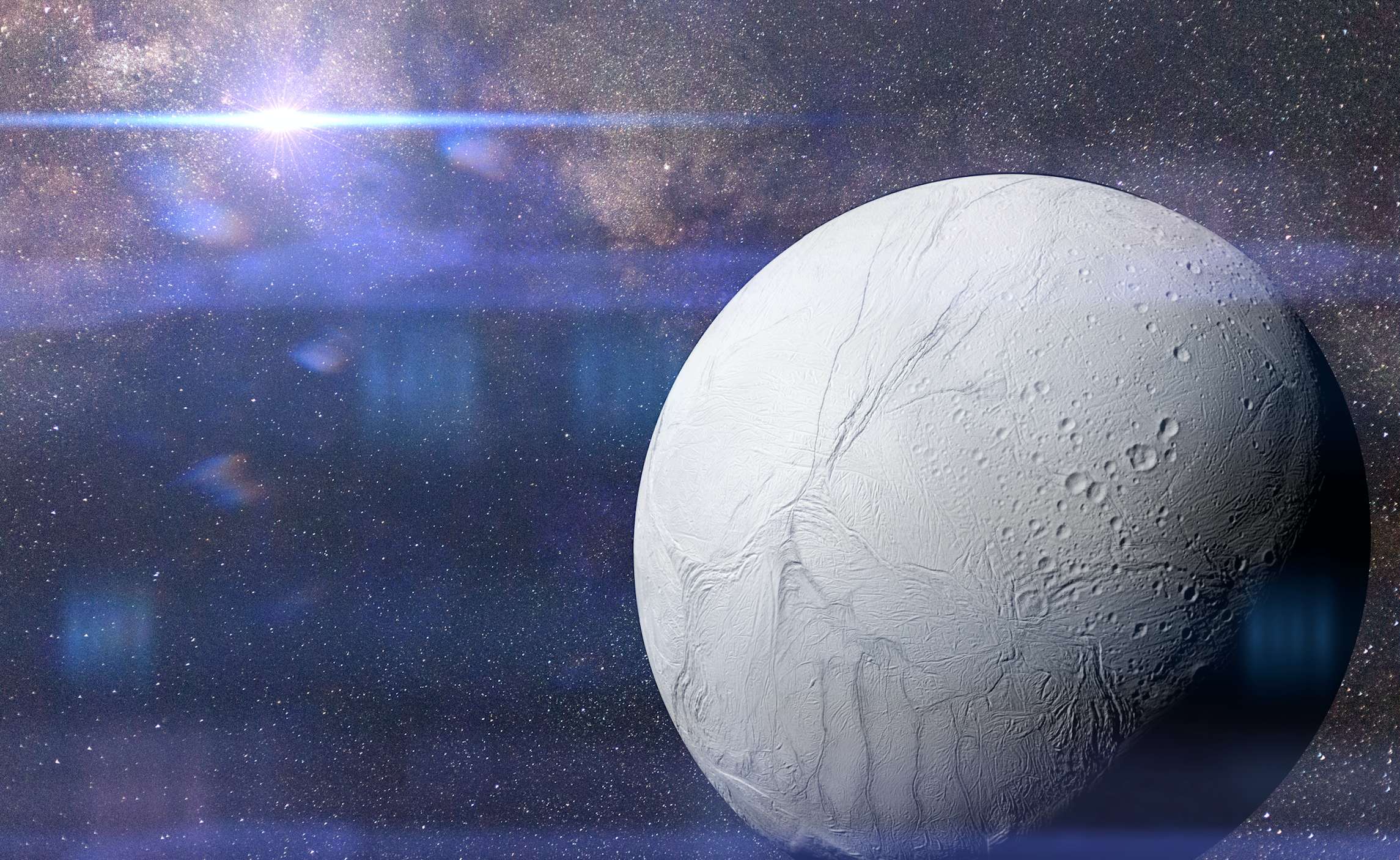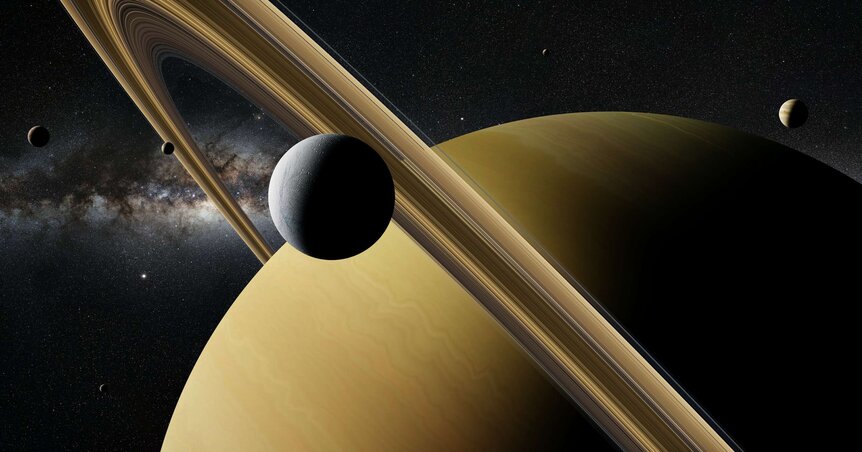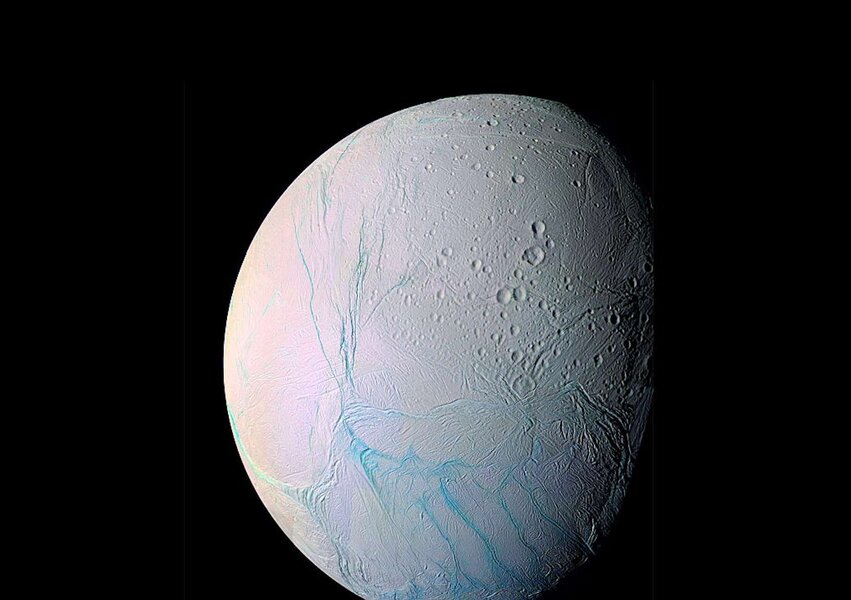Create a free profile to get unlimited access to exclusive videos, sweepstakes, and more!
Could Enceladus' frozen subsurface ocean contain active currents?

Saturn's mysterious moon Enceladus has received a lot of attention in recent years, with remarkable images returned by NASA's now-retired Cassini spacecraft, and scientists theorizing that there might be extraterrestrial life existing in its vast oceans beneath the frozen crust.
Now a team of Caltech researchers has submitted a new study on Enceladus that examines measurements captured by Cassini to analyze how complex interactions between liquid water and ice could generate ocean currents and mixing. Their findings were recently published in the online journal, Nature.
While studying the icy Saturnian moon that is fortified with a 12.4 mile-thick shell of ice, Cassini witnessed strange geysers rising from the surface via fissures called "Tiger Stripes," which etch Enceladus' south polar region. This material originated from a global subsurface ocean hypothesized to exist beneath the moon's wintry blanket, where there's a sizable chance some form of life might be dwelling.
Unlike Earth's relatively shallow oceans, Enceladus’ waters have been speculated to be far deeper on average and might actually extend over 18.6 miles from the frozen crust's bottom to the boundary of the hot solid core. Here on this satellite world, heating dynamics are not reliant upon the Sun's warming rays like Earth's oceans, but arrive via chilled water lying close to the cold crust and the deepest part of the ocean, which is blasted by heat from the moon's superheated core.
According to the study, "This circulation establishes an interior density structure that is more complex than in studies that have focused only on vertical convection, including a shallow freshwater lens in the polar regions. Spatially separated sites of ice formation and melt enable Enceladus to sustain significant vertical and horizontal stratification, which influences interior heat transport and is critical for understanding the relationship between a global ocean and the planetary energy budget."
In previous studies, Enceladus was thought to be globally uniform in nature, except for marginal water-mixing generated by temperature fluctuations near the moon’s core. Caltech's new study has disputed this conclusion, and illuminates why currents can exist in Enceladus’ unexplored ocean, and how these salty currents might harbor life.
Salt is released as a consequence of ocean water freezing, so the surrounding water weighs more and allows it to sink. A reversal of this system is found where ice is actively melting. Caltech's crew used these principles in constructing a model of the moon's waters based on data retrieved by Cassini's mission, including numbers on the thickness of the ice as it forms between the poles and the equator.
Their simulations point to the fact that Enceladus' shell is melting near the polar regions, when the ice crust at the equator is being fortified with more freezing H2O, which is likely to generate salt-driven circulations of water migrating across the moon from top to bottom.
The added elements of this large-scale shifting of frozen water, matched with the Saturnian satellite's previously studied theories of core-heated circulatory dynamics, brings a better understanding of these forces evolving beneath the oceans of Enceladus.
These occurrences also stir up the idea of life-hosting nutrients and organic compounds being churned up as part of the equation in certain fertile regions, a postulation that excites international astrobiologists to no end.





























